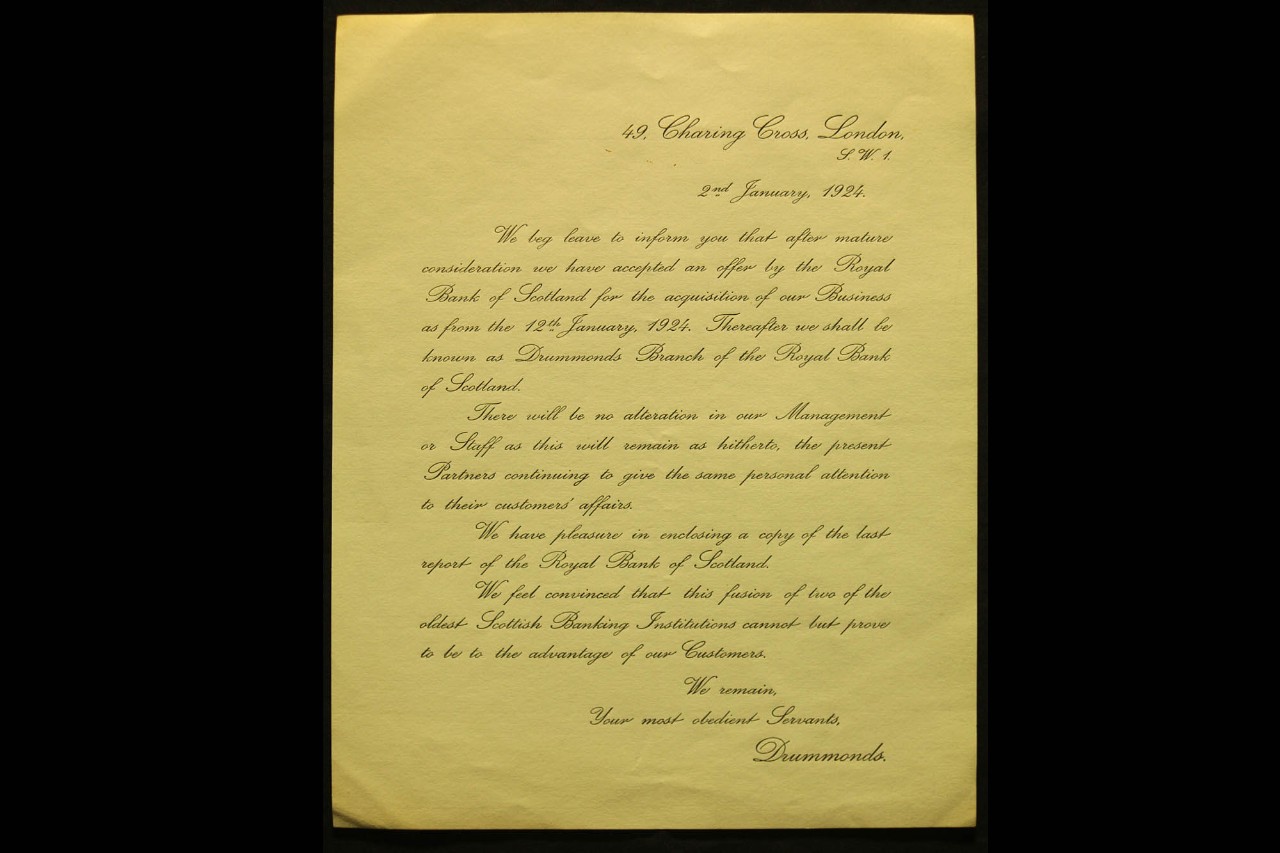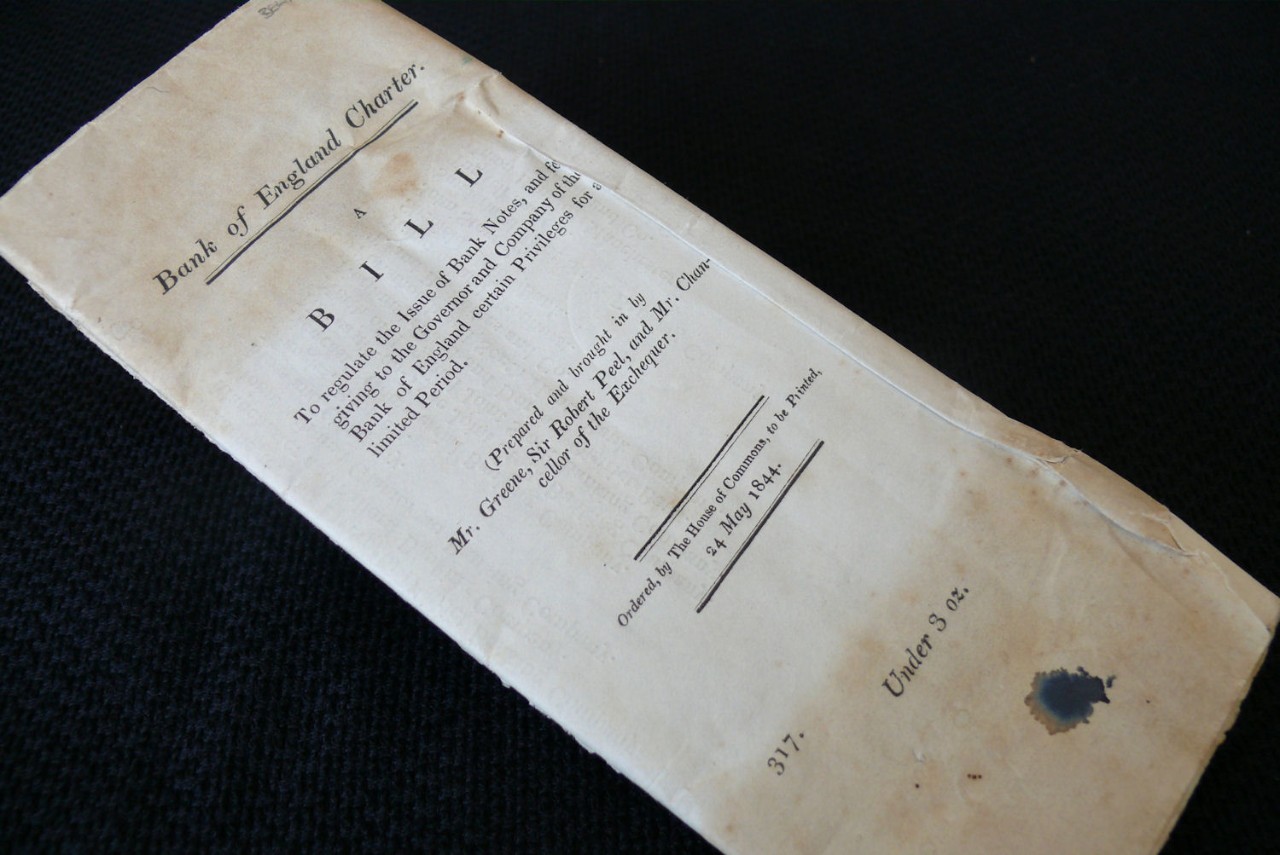Object 37: Acquisition letter, 1924

Letter to customers of Messrs Drummond announcing the bank's acquisition by The Royal Bank of Scotland, 1924
The formal language and italic font of this letter make it look like an old-fashioned wedding invitation. In a way, that's exactly what it is, for this letter is notification of the forthcoming union between the London private bank Drummonds and The Royal Bank of Scotland.
The two banks already had plenty in common. Both were among the oldest names in British banking. The Royal Bank had been founded in Edinburgh in 1727, and Drummonds had grown out of a goldsmith's business established in around 1712. Although it had always been based in London, Drummonds had been founded by a Scotsman, and was proud of its Scottish ancestry and clientele.
| the first step towards becoming a truly national bank
Despite their connections, the acquisition was a major step for both banks. Traditionally, England and Scotland had operated very separate banking systems. Different names dominated north and south of the border, with relatively little overlap. Although the Royal Bank had one London branch, Drummonds was its first major acquisition in England. This was its first step towards becoming a truly national bank.
For Drummonds, too, the acquisition was a big moment. For more than two centuries, Drummonds had been a family-owned partnership, catering for London's well-to-do, including some of the most famous names in British history. Becoming a branch of a bigger shareholder-owned bank would be a major change, but this letter assures customers that banking at Drummonds would remain largely unaltered. This promise was kept. Until as late as the 1960s Drummonds retained its own board of local directors, and even today Drummonds has its own distinct name and brand within RBS.
As The Royal Bank of Scotland made more acquisitions in the 20th century, it followed the pattern it had established with Drummonds, often retaining historic trading names rather than replacing them with its own. Williams Deacon's Bank and Glyn, Mills & Co, both bought by the Royal Bank in the 1930s, kept their own names for decades afterwards. Glyn, Mills & Co also owned Child & Co, the oldest surviving name in British banking, and this name lives on to this day as a separate branch of RBS. More recently, since the acquisition of NatWest in 2000, both NatWest and The Royal Bank of Scotland have continued as separate high street banks.










